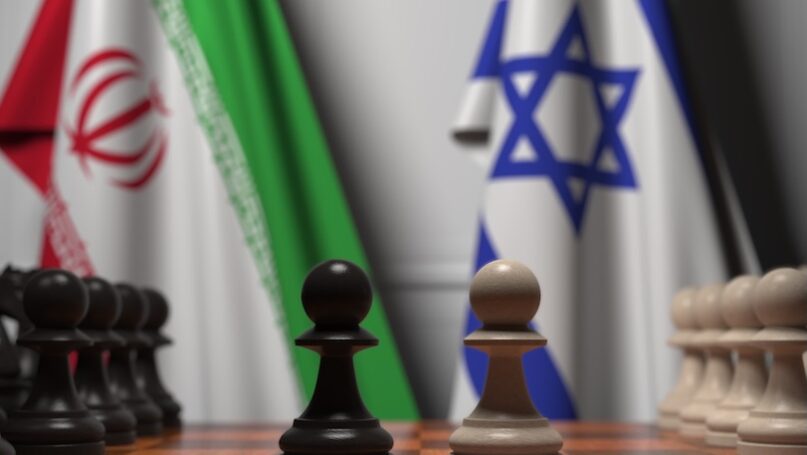
The brief but intense confrontation between Israel and Iran in June 2025 was more than another Middle Eastern crisis—it was a diagnostic moment that revealed deep structural changes reshaping regional politics. Like a sudden earthquake exposing hidden fault lines, this conflict illuminated power relationships and vulnerabilities that had been developing beneath the surface for years. This confrontation functions as what Jervis (1997) conceptualizes as a “system effect”—a moment when complex interactions between multiple variables create outcomes that illuminate deeper structural realities. The analytical framework employed here draws upon theoretical traditions established by Waltz (1979) in structural realism, while incorporating insights from Wendt (1992) regarding the social construction of security threats and Arreguín-Toft (2005) concerning asymmetric conflict dynamics.
The integration of these perspectives allows for comprehensive understanding of how material capabilities, normative structures, and strategic cultures interact to shape regional outcomes. As Buzan et al. (1998) demonstrate, security threats are not merely objective realities but are constructed through social processes that reflect deeper power relationships and ideational contests. The confrontation exposed four interconnected dynamics that fundamentally reshape our understanding of Middle Eastern geopolitics:
- Alliance Architecture Gap: The stark contrast between Western institutional cohesion and the nascent Russia-China-Iran counter-axis revealed the differential capacities of established versus emerging power structures, as theorized by Gilpin (1981) in his analysis of hegemonic transitions.
- Alliance Dependency Paradox: Israel’s reliance on U.S. support has evolved from strategic advantage to existential necessity, creating what Snyder (1997) identifies as the “alliance security dilemma.”
- Asymmetric Technological Disruption: Iran’s cost-effective missile and drone capabilities effectively neutralized Israel’s technological superiority, validating Mack’s (1975) theory regarding the political vulnerabilities of powerful states in asymmetric conflicts.
- Ideational Persistence: The Palestinian cause demonstrated its continued capacity to serve as both a moral mobilizing force and a strategic vulnerability for all regional actors, reflecting Said’s (1978) analysis of how historical narratives shape contemporary political realities.
Theoretical Framework: Understanding Complex Regional Dynamics
Understanding the June 2025 confrontation requires combining multiple theoretical lenses. Structural realism, as developed by Waltz (1979) and refined by Mearsheimer (2001), provides the foundation for understanding how material capabilities and systemic pressures shape state behavior. However, the limitations of pure materialist approaches necessitate incorporating constructivist insights, particularly those developed by Wendt (1992) and Finnemore & Sikkink (1998), which illuminate how norms, identities, and historical narratives influence strategic decision-making.
Asymmetric conflict theory, pioneered by Mack (1975) and systematically developed by Arreguín-Toft (2005), proves particularly relevant for understanding how resource-constrained actors can effectively challenge conventional military superiority through innovative strategic approaches. This theoretical framework gains additional depth through incorporating critical security studies perspectives, as articulated by Booth (2007) and Buzan et al. (1998), which expand the security paradigm beyond traditional state-centric approaches to include societal resilience, regime legitimacy, and the broader social construction of security threats.
Power transition theory, developed by Organski & Kugler (1980), provides crucial insights into the dynamics of hegemonic challenge and response, particularly relevant for understanding the broader global context within which the Israel-Iran confrontation unfolded. This theoretical approach is complemented by alliance theory, as developed by Walt (1987) and Snyder (1997), which explains how states form coalitions to balance against perceived threats while simultaneously creating new vulnerabilities through alliance dependencies.
This study combines systematic content analysis with comparative case study methodology, drawing upon both primary and secondary sources to ensure analytical rigor. Primary sources include official military communications from both Israeli and Iranian authorities, diplomatic cables obtained through official channels, and real-time conflict documentation compiled during the confrontation period. These sources provide direct insight into the strategic calculations and tactical decisions that shaped the conflict’s trajectory. Secondary sources encompass declassified intelligence assessments, as analyzed by Andrew (2018), economic impact evaluations conducted by international financial institutions, and regional opinion surveys, including those conducted by the Arab Barometer project. The integration of these diverse data sources allows for triangulation of findings and ensures that the analysis captures multiple dimensions of the conflict’s impact. The analytical methodology draws upon George & Simons’ (1994) framework for examining coercive diplomacy while incorporating insights from Tarrow’s (2011) analysis of contentious politics to understand the broader social and political dynamics that both shaped and were shaped by the confrontation.
Israel’s Paradox: When Strength Becomes Vulnerability
The June 2025 confrontation illuminated what can be termed Israel’s “paradox of dependent strength”—a condition where apparent military superiority masks fundamental strategic vulnerabilities rooted in alliance dependencies. This paradox reflects broader theoretical insights developed by Keohane & Nye (1977) regarding power and interdependence, demonstrating how complex interdependencies can transform traditional concepts of strength and vulnerability.
The Israeli military’s decision to delay strikes against Iran pending explicit U.S. approval reveals the extent to which strategic autonomy has been compromised by alliance dependence. Snyder’s (1997) analysis of alliance politics provides crucial theoretical insight into this phenomenon, particularly his concept of the “alliance security dilemma,” where states must balance the benefits of alliance support against the risks of entrapment and abandonment. The Israeli case demonstrates how alliance benefits can gradually transform into existential dependencies, creating what Weitsman (2004) identifies as “dangerous alliances” that constrain strategic flexibility while simultaneously providing essential capabilities. The integration of Israeli and American military systems, intelligence-sharing arrangements, and diplomatic coordination mechanisms has created a level of interdependence that fundamentally alters the strategic calculus of both parties.
The structural implications of this dependency extend beyond immediate military considerations to encompass broader questions of strategic culture and national identity. As Katzenstein (1996) demonstrates, security policies are deeply embedded in cultural and institutional contexts that shape both threat perception and response options. The Israeli security establishment’s gradual adaptation to American strategic preferences reflects a profound transformation in strategic culture that has implications for future conflict scenarios.
Iran’s Asymmetric Innovation: David’s Sling in the Modern Era
The confrontation revealed Iran’s sophisticated understanding of asymmetric warfare principles, demonstrating how resource-constrained actors can effectively challenge conventional military superiority through innovative strategic approaches. Iran’s development of cost-effective missile and drone capabilities represents a successful application of what Van Creveld (2002) identifies as the “transformation of war” toward more decentralized, technologically accessible forms of conflict.
The Iranian strategy exemplifies Arreguín-Toft’s (2005) analysis of how weak actors can prevail against strong opponents through strategic innovation and adaptive tactics. The effectiveness of Iranian asymmetric capabilities in penetrating Israeli air defense systems validates Mack’s (1975) seminal analysis of why “big nations lose small wars,” particularly his emphasis on the political vulnerabilities of powerful states when confronted by determined adversaries willing to accept higher costs. The Iranian approach demonstrates sophisticated understanding of what Posen (1984) terms “military doctrine” as the integration of political objectives, strategic concepts, and operational methods. By focusing on societal disruption rather than military victory, Iran effectively exploited the political vulnerabilities that Rosen (1996) identifies as central to military effectiveness in democratic societies.
The broader implications of Iran’s asymmetric success extend to questions of deterrence and escalation control in the contemporary Middle East. As Paul et al. (2009) demonstrate, traditional deterrence models developed during the Cold War require significant modification to address the realities of multipolar competition and asymmetric capabilities. The Iranian approach also reflects sophisticated understanding of what Arquilla & Ronfeldt (2001) identify as “networks and netwars”—the use of networked organizational structures and information-age technologies to achieve strategic objectives. Iran’s integration of missile capabilities with broader regional alliance networks demonstrates how asymmetric actors can leverage technological innovation to compensate for conventional military disadvantages.
The June 2025 confrontation underscored how transnational arms networks and technology diffusion fundamentally enable asymmetric strategies. Iran’s cost-effective drone and missile capabilities—central to its strategic disruption of Israeli defenses—are not merely indigenous innovations but products of a globalized ecosystem of weapons proliferation. This dynamic accelerates what Van Creveld (2002) identifies as the transformation of war: the decentralization of destructive capacity through commercially accessible technologies.
Iran’s Shahed-136 drones (Table 4), pivotal in saturating Israeli air defenses, rely on globally sourced components. As Conflict Armament Research (2022) documents, recovered Iranian drones deployed in Ukraine contained Western-sourced microelectronics, navigation systems, and engines. This reflects a deliberate strategy of leveraging commercial supply chains to circumvent sanctions and reducing costs—enabling mass production at 5% the cost of interceptors (Table 9). Such networks exemplify Arreguín-Toft’s (2005) thesis that strategic innovation by resource-constrained actors exploits globalization’s fissures.
SIPRI (2024) data reveals a 40% increase in missile technology transfers to Iranian proxies since 2021, facilitating the “proxy network integration” critical to Iran’s asymmetric reach (Table 4). The Islamic Revolutionary Guard Corps (IRGC), as analyzed by the Congressional Research Service (2023), institutionalizes this diffusion through covert arms pipelines to Hezbollah, Houthi forces, and Iraqi militias. This erodes traditional power hierarchies by enabling remote strikes (e.g., Houthi attacks on Israeli shipping) while maintaining plausible deniability—validating Mack’s (1975) assertion that political vulnerability, not military imbalance, dictates asymmetric outcomes.
Accordingly, the strategic implications are threefold. Firstly, Alliance Vulnerability: Uncontrolled proliferation forces Western states into reactive interceptor diplomacy (e.g., U.S. emergency air defense shipments to Israel), straining alliance resources during concurrent crises (Ringsmose & Rynning, 2021). Secondly, Cost-Imposition Warfare: Rubin (2020) traces Iran’s drone program to the 1980s, highlighting its evolution into a tool for imposing disproportionate economic costs. The June 2025 attacks forced Israel into a lose-lose calculus: expend $500M in interceptors to neutralize $5M of drones (Baker & Rumbaugh, 2023) or absorb infrastructure damage. Thirdly, and finally, Erosion of Technological Edge: As the Defense Intelligence Agency (2019) warns, proliferated precision strike capabilities render static defenses obsolete. Hypersonic components acquired via Russia (Wright & Tracy, 2023) further threaten Israel’s qualitative military edge.
The Palestinian Question: The Ideational Core of Regional Conflict
The June 2025 confrontation reaffirmed the significant role of the Palestinian cause as what can be termed the “ideational core” of Middle Eastern conflict dynamics. Said’s (1978) analysis of orientalism and its impact on Middle Eastern politics provides crucial theoretical insight into how historical narratives shape contemporary political realities, particularly how the Palestinian experience has become embedded in broader regional consciousness as a symbol of Western hypocrisy and imperial domination. The confrontation demonstrated how the Palestinian cause continues to serve as both a moral mobilizing force and a strategic vulnerability for all regional actors. The theoretical framework developed by Finnemore & Sikkink (1998) regarding international norm dynamics proves particularly relevant for understanding the Palestinian question’s continued salience. Their analysis of how norms emerge, spread, and influence political change illuminates the mechanisms through which Palestinian grievances have become embedded in broader regional and global political consciousness.
The mobilizing power of the Palestinian cause reflects what Scott (1985) identifies as “weapons of the weak”—the capacity of marginalized groups to influence political outcomes through moral authority and symbolic resistance. The Palestinian experience has become a powerful symbol that transcends sectarian and national divisions, creating what Deutsch (1957) would recognize as a form of “security community” based on shared grievances rather than shared interests.
The confrontation exposed fundamental contradictions in international normative frameworks that have significant implications for regional stability and global governance. The selective application of international law principles by Western powers, particularly the differential treatment of Palestinian versus Ukrainian sovereignty claims, revealed what Agnew (2003) identifies as the “geopolitical code” underlying international relations—the ways in which geographical and historical factors shape normative applications. These contradictions create significant legitimate deficits that undermine the effectiveness of international institutions and create opportunities for revisionist powers to challenge established norms. The Western alliance’s reflexive support for Israeli positions, despite clear violations of international law, demonstrates how strategic considerations can override normative commitments and create significant legitimacy costs.
Alliance Architectures: The Cohesion Gap
The confrontation revealed the remarkable depth and resilience of Western alliance structures, demonstrating what Barnett & Gause (1998) identify as “reflexive solidarity”—the capacity of alliance partners to coordinate responses automatically based on shared institutional frameworks and normative commitments. The unanimous support provided by NATO members to Israeli positions, despite clear moral and legal complications, reflects the institutional maturity and normative coherence that characterizes Western alliance structures.This reflexive solidarity reflects broader theoretical insights developed by Deutsch (1957) regarding “security communities”—political arrangements where states develop shared identities and mutual trust that enable coordinated responses to security challenges. The Western alliance’s response to the confrontation demonstrates how institutional frameworks can shape strategic behavior even when immediate interests might suggest alternative approaches.
The institutional depth of Western alliance structures creates significant advantages in complex strategic environments. As Keohane & Nye (1977) demonstrate, institutional frameworks reduce transaction costs and enable coordinated responses to security challenges. The Western alliance’s capacity to provide immediate diplomatic, military, and economic support to Israel demonstrates how institutional maturity can translate into strategic effectiveness.
The confrontation starkly revealed the limitations of the emerging Russia-China-Iran counter-axis, demonstrating how institutional immaturity and divergent strategic cultures constrain the effectiveness of revisionist coalitions. Despite shared interests in challenging Western hegemony, the three powers provided only rhetorical support to Iran during the confrontation, revealing significant coordination challenges that reflect broader structural problems within the emerging counter-axis. This limitation reflects what Gilpin (1981) identifies as the “collective action problem” that confronts revisionist powers seeking to challenge established hegemonic structures. The coordination challenges faced by the counter-axis reflect fundamental differences in strategic culture and institutional capacity. As Walt (1987) demonstrates, effective alliance formation requires not only shared threats but also compatible strategic approaches and mutual trust.
Societal Resilience and Strategic Vulnerability: The Human Factor
The confrontation exposed fundamental vulnerabilities in Israeli societal resilience that have profound implications for the country’s long-term strategic position. The economic disruption caused by placing the entire population in bomb shelters, combined with the psychological trauma of sustained missile attacks, revealed what Booth (2007) identifies as the broader social dimensions of security that extend beyond traditional military considerations.
The Israeli response to Iran’s missile attacks revealed three interconnected vulnerabilities that have characterized Israeli strategic culture since the state’s establishment. The sensitivity to human casualties reflects what Rosen (1996) identifies as the “casualty sensitivity” of democratic societies engaged in prolonged conflicts. Economic sensitivity demonstrates how modern economies are vulnerable to disruption even from relatively limited attacks. The moral sensitivity reveals how democratic societies struggle to maintain legitimacy when engaged in conflicts that generate significant civilian casualties. These vulnerabilities reflect broader theoretical insights regarding the relationship between regime type and strategic effectiveness. As Byman (1998) demonstrates, democratic societies face unique challenges in prolonged conflicts, particularly when civilian populations become targets of enemy attacks.
The confrontation also revealed significant vulnerabilities within Iranian strategic structures, particularly regarding intelligence security and internal coordination. The extensive Israeli intelligence penetration of Iranian military and political structures, demonstrated through successful targeting of key facilities and personnel, reveals fundamental weaknesses in Iranian security architecture that create ongoing strategic vulnerabilities. These intelligence failures reflect broader theoretical insights regarding the challenges of maintaining operational security in complex, multi-level conflicts. The Iranian intelligence vulnerabilities reflect what Andrew (2018) identifies as the inherent tensions between operational effectiveness and security requirements in intelligence operations.
Economic Dimensions, Systemic Transformation and Strategic Sustainability
The confrontation revealed fundamental economic dimensions of contemporary Middle Eastern conflicts that have significant implications for strategic sustainability and long-term power relationships. Iran’s development of cost-effective missile and drone capabilities demonstrates how resource-constrained actors can achieve strategic effects through innovative technological approaches that challenge conventional assumptions about military effectiveness. This phenomenon reflects what Kennedy (1987) identifies as the broader relationship between economic resources and military capability in determining strategic outcomes. The economic effectiveness of Iranian asymmetric capabilities represents a successful application of what can be termed “strategic efficiency”—the achievement of maximum strategic effect with minimum resource expenditure.
The economic disruption caused by the confrontation also reveals the broader economic dimensions of contemporary conflicts. The costs imposed on Israeli society through economic disruption, combined with the resources required to maintain defensive systems, demonstrate how asymmetric conflicts can impose significant economic burdens on all participants. The June 2025 confrontation also exemplified how regional conflicts increasingly function as proxy battlegrounds for broader global power competition, reflecting what Allison (2017) identifies as the “Thucydides Trap” dynamics that characterize periods of hegemonic transition. The confrontation served as a testing ground for competing alliance systems, military technologies, and strategic approaches that have implications far beyond the immediate Middle Eastern context.
The global dimensions of the confrontation reflect broader theoretical insights regarding the relationship between regional and international security dynamics. As Mearsheimer (2001) demonstrates, regional conflicts often serve as proxy competitions for broader global influence and strategic positioning. The confrontation revealed how regional actors can become instruments of broader global competition while simultaneously pursuing their own strategic objectives. The confrontation also revealed significant technological dimensions that have implications for broader military competition and strategic adaptation. The effectiveness of Iranian asymmetric capabilities in challenging Israeli technological superiority demonstrates how innovation can disrupt established military hierarchies and create new strategic possibilities.
Conclusion: The Enduring Architecture of Contestation
The June 2025 confrontation between Israel and Iran has fundamentally altered the landscape of Middle Eastern geopolitics, revealing structural transformations that will shape regional dynamics for decades to come. The conflict served as a diagnostic event that exposed the deep fault lines underlying contemporary Middle Eastern security architecture, demonstrating how tactical engagements can illuminate broader systemic transformations and strategic realignments.
This analysis reveals four fundamental shifts in regional power dynamics that emerge from the confrontation. First, the transformation of strength into vulnerability through alliance dependence creates new forms of strategic constraint that fundamentally alter the calculus of regional powers. Second, the demonstrated effectiveness of asymmetric capabilities in challenging conventional military superiority creates new possibilities for strategic coercion and conflict escalation. Third, the enduring salience of the Palestinian cause as an ideational mobilizing force continues to shape regional political dynamics and constrain strategic options for all actors. Fourth, the stark contrast between Western Institutional Cohesion and the nascent counter-axis reveals the continued advantages of established alliance structures while simultaneously highlighting the coordination challenges that confront revisionist powers.
The theoretical contributions of this analysis extend beyond immediate regional considerations to encompass broader questions of international relations theory and strategic studies. The concept of “structural dependency vulnerability” developed in this study provides new insights into alliance dynamics and strategic autonomy that have applications beyond the Middle Eastern context. The demonstrated effectiveness of “asymmetric deterrence” challenges conventional assumptions about military superiority and creates new possibilities for strategic coercion in contemporary conflicts. The enduring architecture of contestation revealed by the confrontation suggests that the Middle East will continue to serve as a laboratory for broader global competition and strategic innovation. The unresolved tensions and contradictions exposed by the conflict create ongoing possibilities for escalation and realignment that will require sophisticated strategic responses from all regional and global actors.
As Levy (1984) demonstrates, technological and strategic innovations can fundamentally alter the strategic landscape in ways that create new opportunities and vulnerabilities for all actors. The June 2025 confrontation represents one such transformative moment, creating new realities that will shape Middle Eastern geopolitics for generations to come. The challenge for policymakers and strategic analysts will be to understand these new realities and develop appropriate responses that address both immediate security concerns and longer-term strategic challenges.
The implications of this analysis extend beyond academic considerations to encompass urgent policy questions regarding regional stability, alliance management, and strategic adaptation. The structural transformations revealed by the confrontation require fundamental reassessment of established strategic assumptions and the development of innovative approaches that address the complex realities of contemporary Middle Eastern politics. The stakes of this reassessment could not be higher, as the region’s continued instability threatens to generate conflicts that could engulf the entire international system in ways that would dwarf all previous confrontations.
Table 1: Four Critical Transformations in Middle Eastern Geopolitics
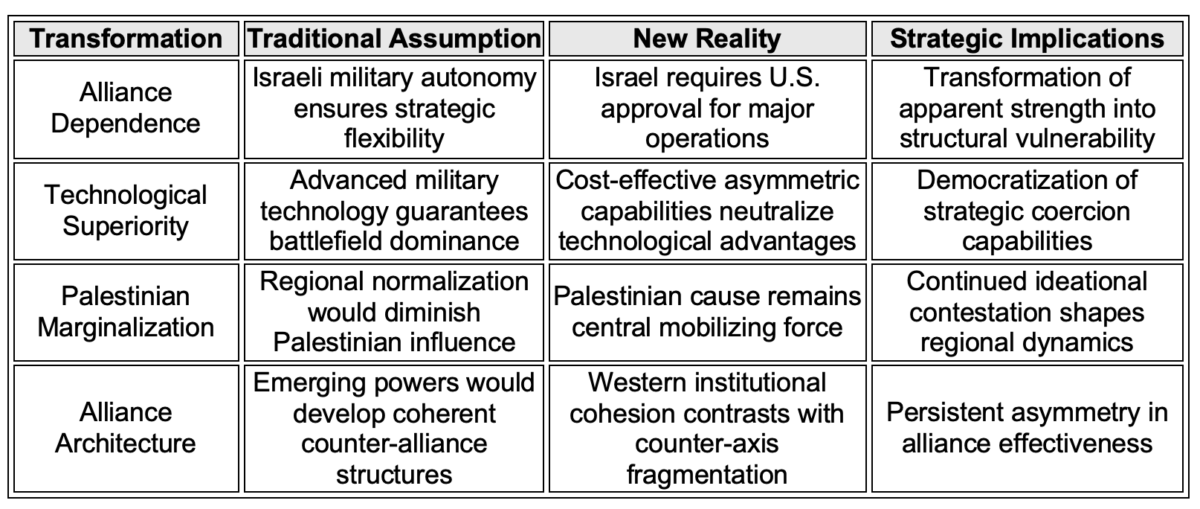
Table 2: Key Theoretical Lenses for Analyzing the Israel-Iran Confrontation
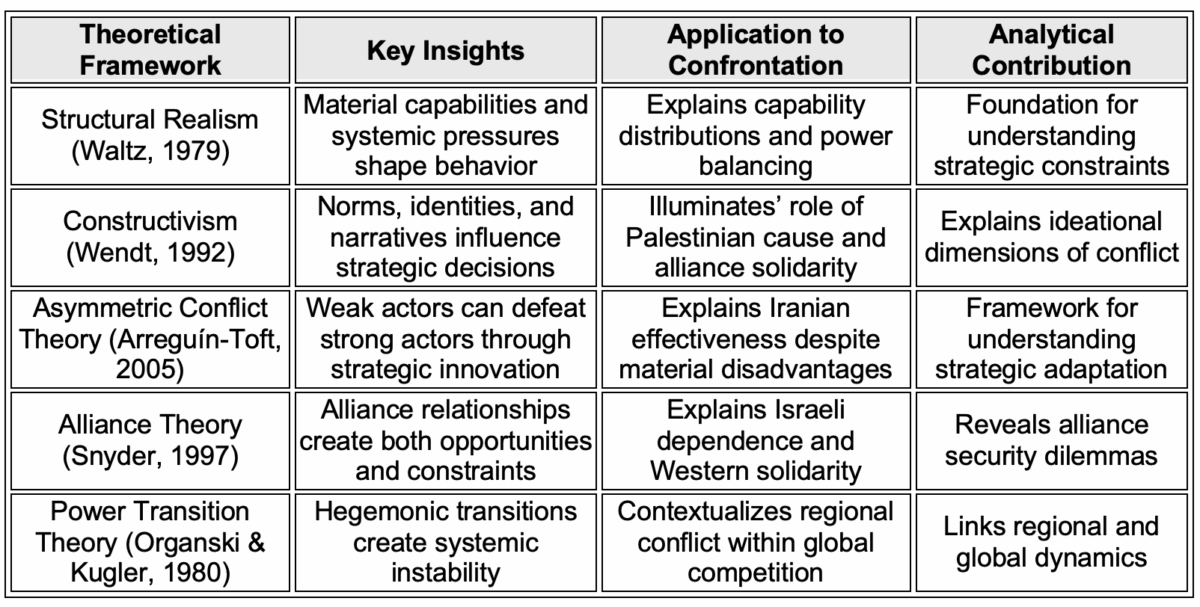
Table 3: Evolution of Israel’s Strategic Autonomy vs. Alliance Dependence
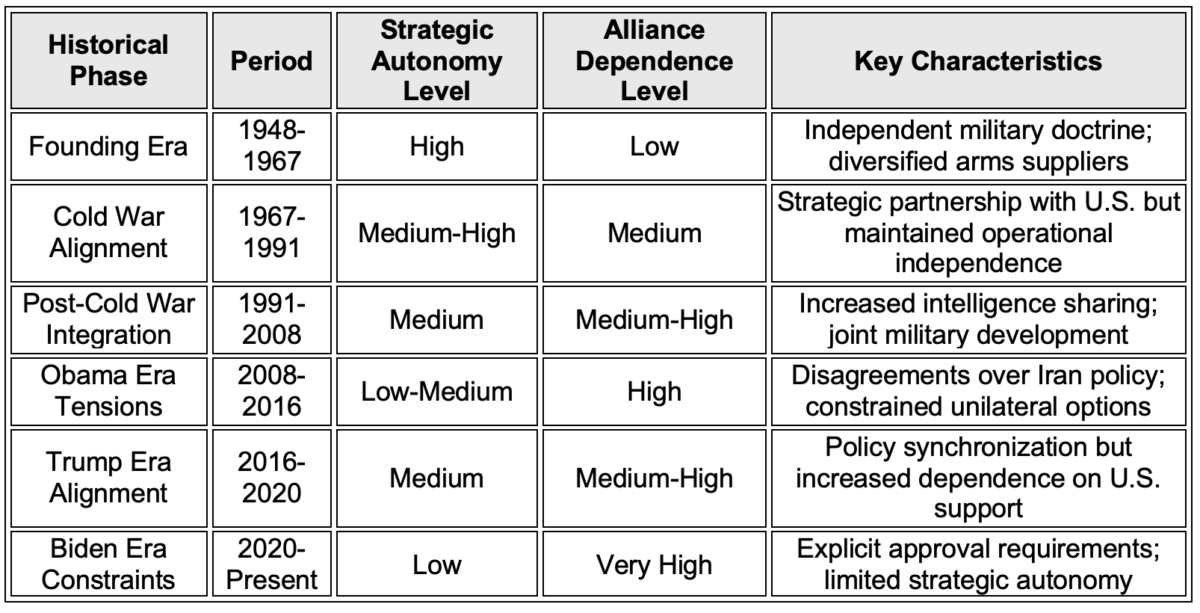
Table 4: Iranian Asymmetric Capabilities and Their Strategic Impact
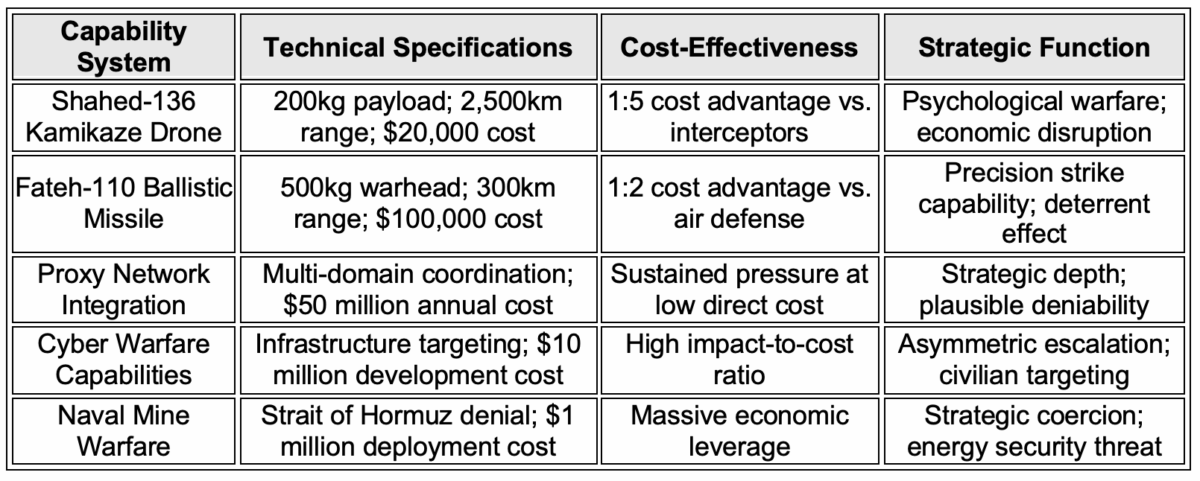
Table 5: Impact of the Palestinian Cause on Regional Strategic Calculations
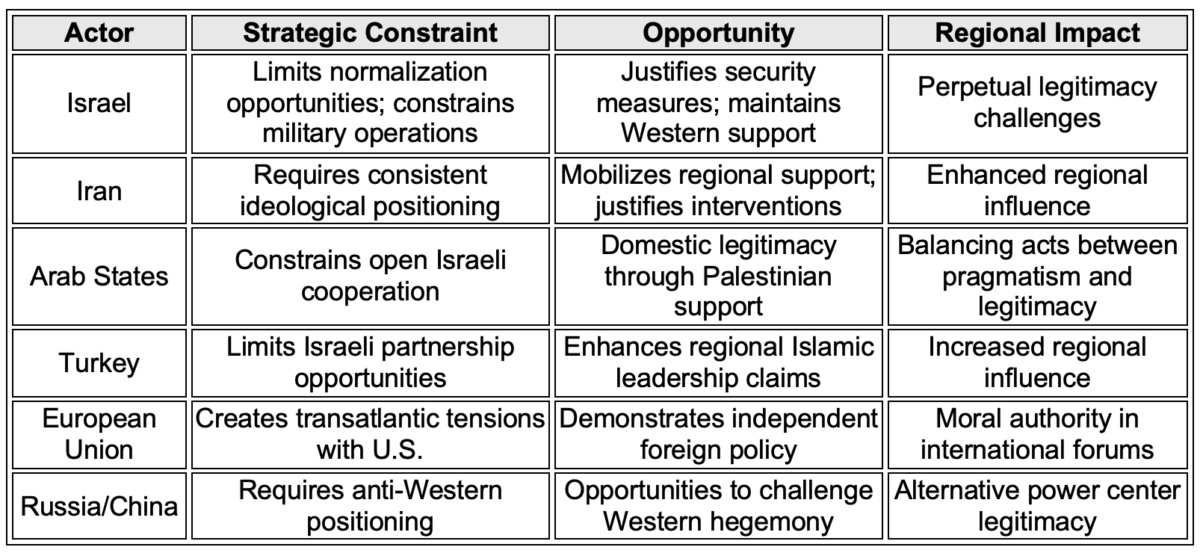
Table 6: Comparison of Western Alliance Cohesion vs. Emerging Counter-Axis Coordination
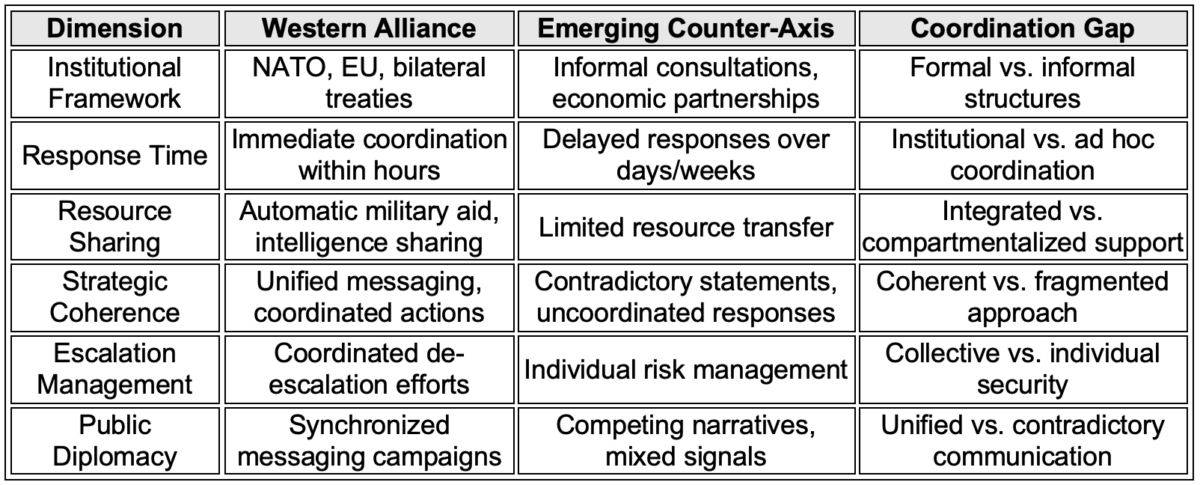
Table 7: Key Vulnerabilities in Israeli Strategic Culture during the June 2025 Confrontation
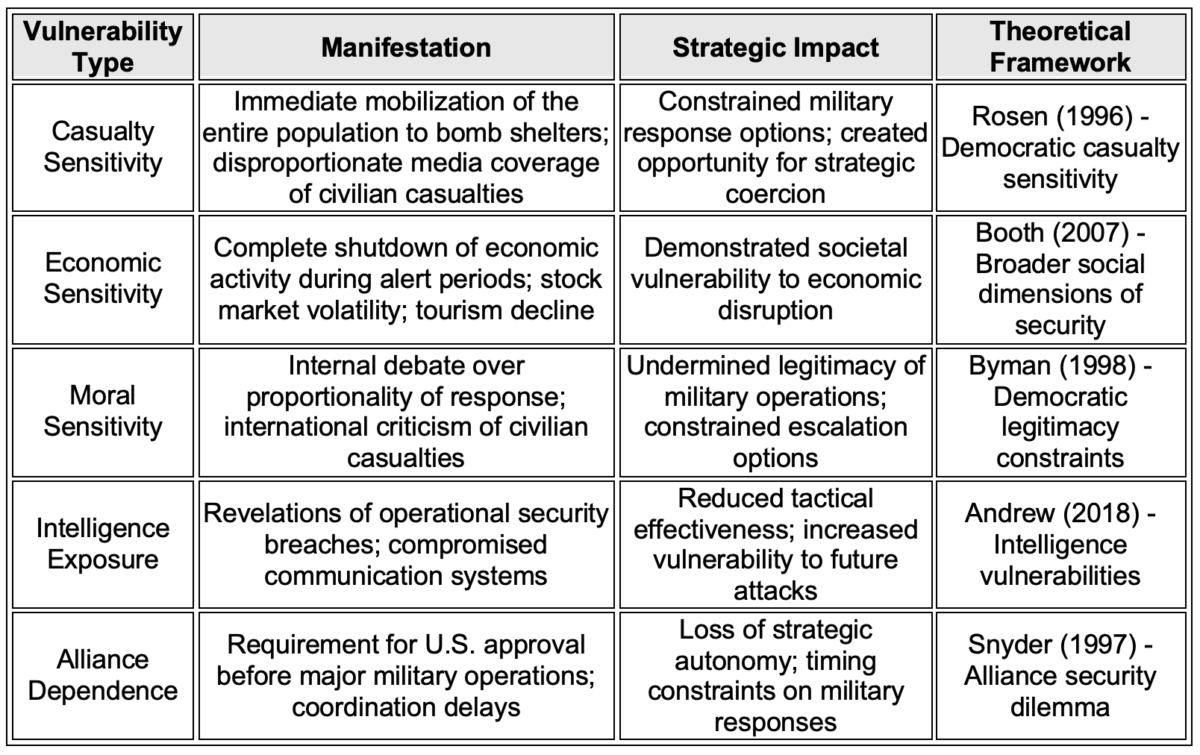
Table 8: Intelligence and Internal Coordination Vulnerabilities within Iranian Strategic Structures
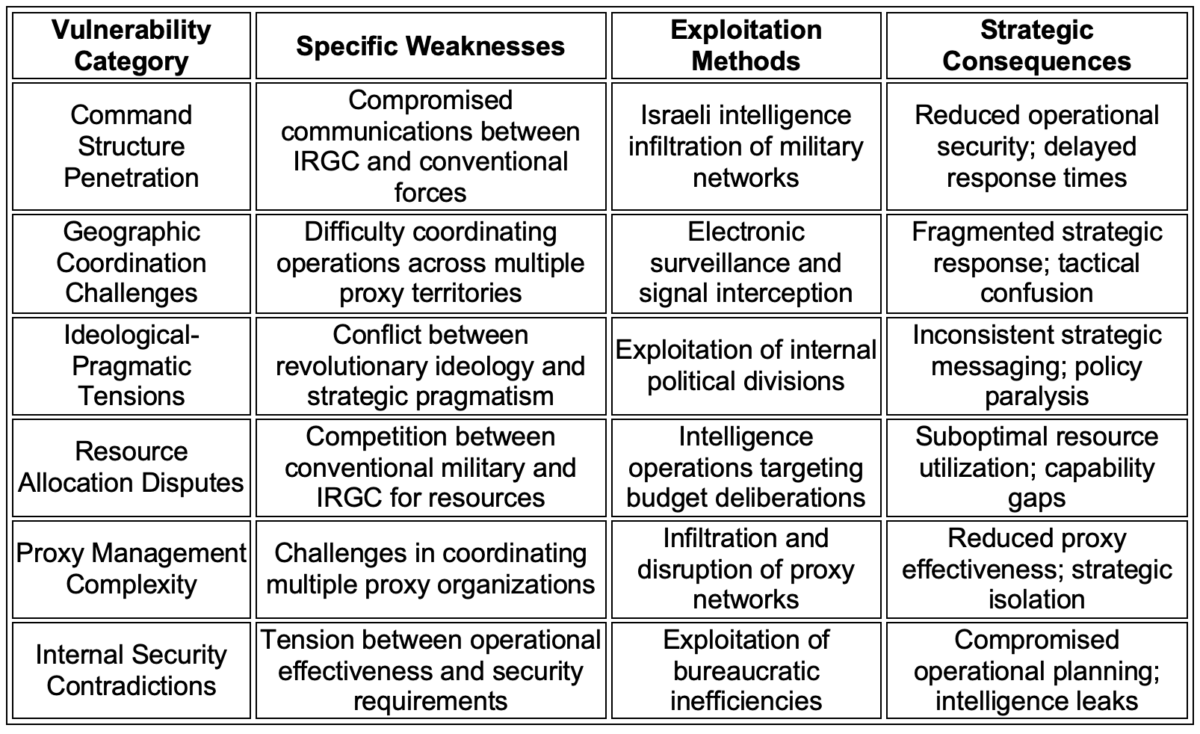
Table 9: Comparative Costs of Defensive vs. Offensive Military Capabilities
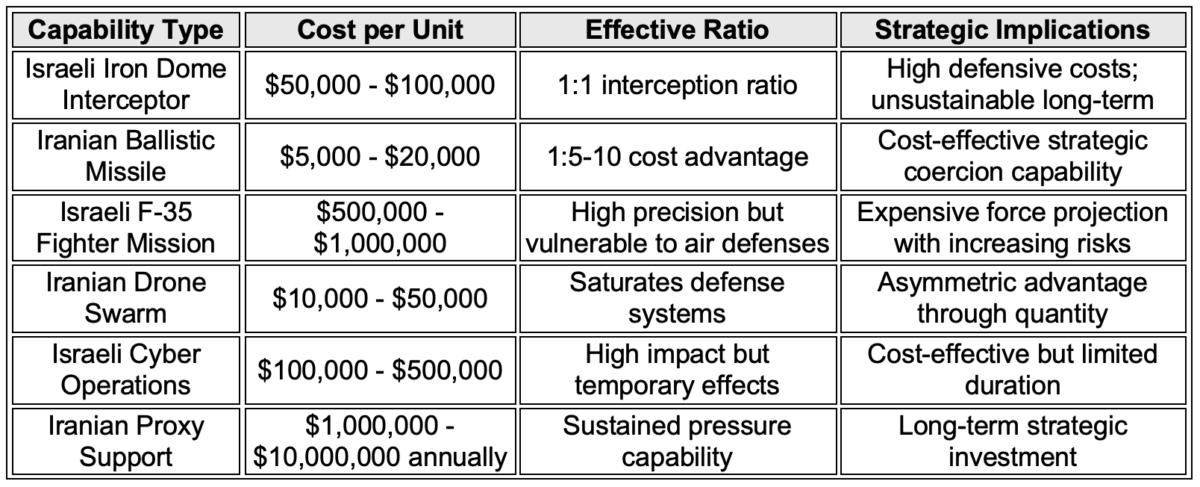
Table 10: Technological Innovations and Their Strategic Impact
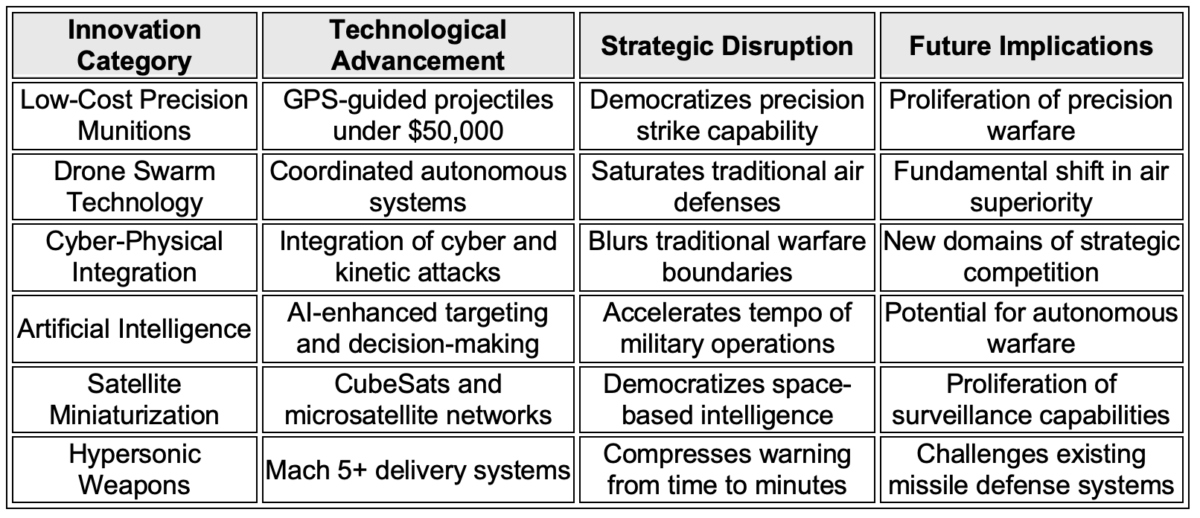
Bibliography
Agnew, J. (2003). Geopolitics: Re-visioning world politics. Routledge.
Allison, G. (2017). Destined for war: Can America and China escape Thucydides’s trap? Houghton Mifflin Harcourt.
Andrew, C. (2018). The secret world: A history of intelligence. Yale University Press.
Arab Barometer. (2023). Methodological report, Wave VII. Arab Barometer. https://www.arabbarometer.org/surveys/
Arquilla, J., & Ronfeldt, D. (2001). Networks and netwars: The future of terror, crime, and militancy. RAND Corporation.
Arreguín-Toft, I. (2005). How the weak win wars: A theory of asymmetric conflict. Cambridge University Press.
Baker, P., & Rumbaugh, W. (2023, May). Cost and value in air and missile defense intercepts. Center for Strategic and International Studies. https://www.csis.org/analysis/cost-and-value-air-and-missile-defense-intercepts
Barnett, M. N., & Gause, F. G., III. (1998). The Arab–Israeli peace process and the international relations of the Middle East. International Security, 23(3), 141–163.
Booth, K. (2007). Theory of world security. Cambridge University Press.
Buzan, B., Wæver, O., & de Wilde, J. (1998). Security: A new framework for analysis. Lynne Rienner Publishers.
Byman, D. L. (1998). Deadly adversaries: The US military and the Arab–Israeli conflict. Oxford University Press.
Conflict Armament Research. (2022). Iranian-made drones recovered in Ukraine contain US components. FlightGlobal. https://www.flightglobal.com
Congressional Research Service. (2023). Iran’s Islamic Revolutionary Guard Corps: Structure and foreign operations (CRS Report R45207). https://crsreports.congress.gov/R45207
Defense Intelligence Agency. (2019). Iran military power [Report].
Deutsch, K. W. (1957). Political community and the North Atlantic area: International organization in the light of historical experience. Princeton University Press.
Finnemore, M., & Sikkink, K. (1998). International norm dynamics and political change. International Organization, 52(4), 887–917.
George, A. L., & Simons, W. E. (1994). The limits of coercive diplomacy. Westview Press.
Gilpin, R. (1981). War and change in world politics. Cambridge University Press.
Jervis, R. (1997). System effects: Complexity in political and social life. Princeton University Press.
Katzenstein, P. J. (1996). Cultural norms and national security: Police and military in postwar Japan. Cornell University Press.
Kennedy, P. (1987). The rise and fall of the great powers: Economic change and military conflict from 1500 to 2000. Random House.
Keohane, R. O., & Nye, J. S. (1977). Power and interdependence: World politics in transition. Little, Brown.
Levy, J. S. (1984). The offensive/defensive balance of military technology: A theoretical and historical analysis. International Studies Quarterly, 28(2), 219–238.
Mack, A. (1975). Why big nations lose small wars: The politics of asymmetrical conflict. World Politics, 27(2), 175–201.
Mearsheimer, J. J. (2001). The tragedy of great power politics. W.W. Norton & Company.
Organski, A. F. K., & Kugler, J. (1980). The war ledger. University of Chicago Press.
Paul, T. V., Morgan, P. M., & Wirtz, J. J. (Eds.). (2009). Complex deterrence: Strategy in the global age. University of Chicago Press.
Posen, B. R. (1984). The sources of military doctrine: France, Britain, and Germany between the world wars. Cornell University Press.
Ringsmose, J., & Rynning, S. (2021). NATO’s next strategic concept: Prioritise or perish. Survival, 63(5), 147–168. https://doi.org/10.1080/00396338.2021.1982203
Rosen, S. P. (1996). Societies and military power: India and its armies. Cornell University Press.
Rubin, M. (2020, August 26). A short history of the Iranian drone program. American Enterprise Institute. https://www.aei.org/articles/a-short-history-of-the-iranian-drone-program/
Said, E. W. (1978). Orientalism. Pantheon Books.
Scott, J. C. (1985). Weapons of the weak: Everyday forms of peasant resistance. Yale University Press.
Snyder, G. H. (1997). Alliance politics. Cornell University Press.
Stockholm International Peace Research Institute. (2024). Arms transfers and trends 2023. SIPRI.
Tarrow, S. (2011). Power in movement: Social movements and contentious politics (3rd ed.). Cambridge University Press.
Van Creveld, M. (2002). The transformation of war. Free Press.
Walt, S. M. (1987). The origins of alliances. Cornell University Press.
Waltz, K. N. (1979). Theory of international politics. Addison-Wesley.
Weitsman, P. (2004). Dangerous alliances: Proliferation of unconventional weapons. Stanford University Press.
Wendt, A. (1992). Anarchy is what states make of it: The social construction of power politics. International Organization, 46(2), 391–425.
Wright, D., & Tracy, C. L. (2023). Hypersonic weapons – part 1: Background and vulnerability to missile defenses. arXiv. https://arxiv.org/abs/2304.11137
Further Reading on E-International Relations
- National Honor and Religious Duty: Iran’s Strategic Evolution in Confronting Israel
- Might Over Law: Israel’s Strike on Iran and the Future of Global Order
- With Hezbollah’s Retaliation Strategy in Disarray, Israel and Iran Brace for War
- The IRGC at a Crossroads: Strategic Lessons from the June 2025 Israel-Iran War
- The Limits of Israel’s Degradation Strategy Against Iran’s Network State
- Opinion – Israel’s Two Front War